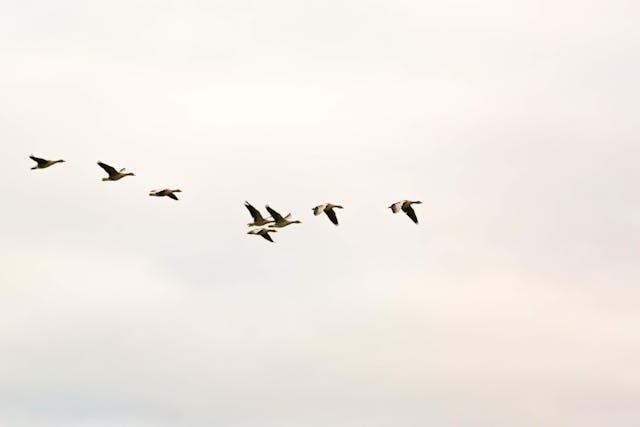Home » News » 2024 » December
News Brief
Dec. 12, 2024 |
By: Rudi Keller - Missouri Independent
Missouri Conservation Department finds likely bird flu cases among snow geese

By Rudi Keller - Missouri Independent
The Missouri Conservation Department received confirmation Wednesday morning of something it feared — three dead snow geese found by state wildlife refuge staff were likely infected with bird flu.
Samples from the birds — two recovered in Henry County and one in Vernon County — were reported as “non-negative” for avian influenza after testing at the University of Missouri Veterinary Medical Diagnostic Laboratory, said Deb Hudman, supervisor of the department’s wildlife health program.
The samples will now be sent to National Veterinary Services Laboratory to determine whether the virus is the highly pathogenic variant or one that is less likely to cause an outbreak that can spread through flocks of wild and domestic birds.
“It’s going to be a month or so before we know which version of avian influenza, but you know, we treat that basically as an avian influenza positive,” Hudman said in an interview with The Independent.
More birds have been found, some in southeast Missouri and some in the St. Louis area, she said. They are being tested but results are not available yet.
The discovery of the dead birds prompted the department to issue a warning Tuesday to the public to avoid touching waterfowl found dead and to report any dead ducks or geese they see so samples can be collected for testing.
With the annual waterfowl hunting season underway, the advisory also asked hunters to field dress any birds they kill and carry the offal out for disposal away from lakes and waterways.
“Bald eagles and other raptors are particularly susceptible to avian influenza,” the advisory stated. “This simple action could help prevent bald eagle and other raptor mortalities.”
Pets should be kept away from dead birds as well. Wash hands thoroughly after inadvertent contact.
Wild waterfowl can spread the infection to agricultural flocks that are less immune. Snow geese are common carriers of bird flu in the wild, Hudman said.
Snow geese gather in immense numbers in Missouri as they migrate from summer nesting sites along Hudson Bay and the Arctic Ocean to where they spend the winter along the Gulf Coast. At the Loess Bluff National Wildlife Refuge near Mound City, a survey conducted last week showed more than 50,000 geese, 170,000 ducks and 373 bald eagles at the refuge.
The numbers can be far higher. A survey in February 2023 showed approximately 2 million snow geese, about four times the human population of Kansas City.
“They’re susceptible to avian influenza, but they’re also the natural reservoir,” Hudman said.
Many migrating waterfowl carry the low-pathogenic, or less disease-causing, variant.
“These birds, they can carry the virus without showing symptoms, but it allows it to spread easily,” Hudman said.
There is no reason to worry about bird flu infections from songbirds that visit winter feeders, she said.
“We’re specifically worried about waterfowl because of the environment, the wetlands that they’re in and the numbers that they’re in,” she said. “Songbirds are very, very resistant to this.”
In September, a Missouri resident was diagnosed with bird flu without having any known contact with infected birds. An investigation by the Centers for Disease Control was unable to determine the source of the infection and found one other likely, but not confirmed, case associated with it.
The department will respond to reports of dead birds by removing them and taking samples for testing, Hudman said. Removal by professionals will help prevent spread of the disease, she said.
“The longer they’re on the landscape, then the higher the probability things that scavenge on them, like eagles, will feed on them,” Hudman said. “Raptors will feed on them, coyotes will feed on them, raccoons, you know, all the typical things that are happy to eat a goose are doing so. So the longer they’re on the landscape, then the more the outbreak can persist.”
There is no danger for hunters eating fully cooked waterfowl they bag or birdwatchers who visit wetlands to see the huge flocks migrating to winter nesting sites.
“You should absolutely go out and enjoy them,” Hudman said. “We put out these things saying it’s just a matter of safe hygiene. We just say, ‘please don’t touch the birds’ because, and the reason I put that out is because I heard that some folks were picking them up.”
![]()






